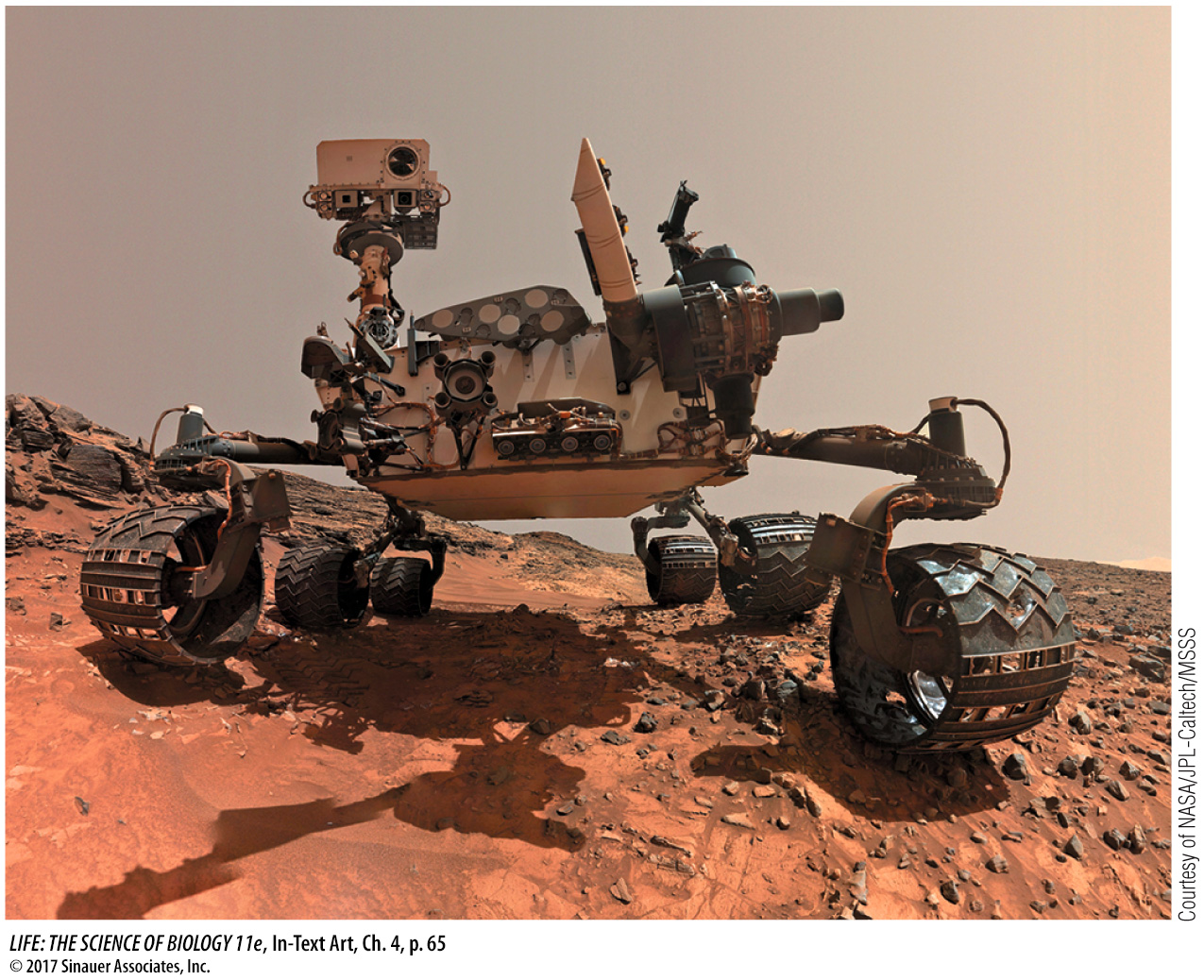Chapter Introduction
Nucleic Acids and
the Origin of Life

investigating life
Looking for Life
On Earth you can find organisms and the chemical signatures of life everywhere—
Mars has fascinated scientists (and science-
Better telescopes, chemical analyses based on light emission (spectroscopy), orbiting satellites, and landers controlled from Earth have laid to rest many of the initial ideas about life on Mars. But the challenge of finding present or past life on Mars remains. The search revolves around finding organisms, evidence of a current or past environment where life could exist, and chemical signatures of present or past life.

Unlike Earth, Mars now lacks a magnetic field to protect against cosmic radiation arriving from space. The surface of Mars is assaulted with very high levels of radiation, making it inhospitable to life. So any current life would have to be below the surface, where radiation is much lower.
Since life as we know it requires water, determining whether Mars now has or ever had water has been a central question. It is now established that water exists on the surface of Mars—
Can we find evidence of life on Mars?